Related Research Articles
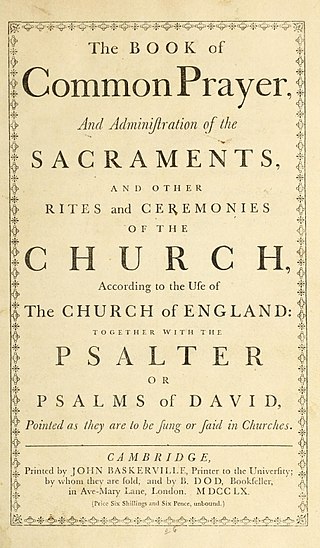
The Book of Common Prayer (BCP) is the name given to a number of related prayer books used in the Anglican Communion and by other Christian churches historically related to Anglicanism. The first prayer book, published in 1549 in the reign of King Edward VI of England, was a product of the English Reformation following the break with Rome. The work of 1549 was the first prayer book to include the complete forms of service for daily and Sunday worship in English. It contained Morning Prayer, Evening Prayer, the Litany, and Holy Communion and also the occasional services in full: the orders for Baptism, Confirmation, Marriage, "prayers to be said with the sick", and a funeral service. It also set out in full the "propers" : the introits, collects, and epistle and gospel readings for the Sunday service of Holy Communion. Old Testament and New Testament readings for daily prayer were specified in tabular format as were the Psalms and canticles, mostly biblical, that were provided to be said or sung between the readings.

The Puritans were English Protestants in the 16th and 17th centuries who sought to purify the Church of England of Roman Catholic practices, maintaining that the Church of England had not been fully reformed and should become more Protestant. Puritanism played a significant role in English history, especially during the Protectorate.

Samuel Harsnett, born Samuel Halsnoth, was an English writer on religion and Archbishop of York from 1629.

John Bramhall, DD was an Archbishop of Armagh, and an Anglican theologian and apologist. He was a noted controversialist who doggedly defended the English Church from both Puritan and Roman Catholic accusations, as well as the materialism of Thomas Hobbes.

The Savoy Conference of 1661 was a significant liturgical discussion that took place, after the Restoration of Charles II, in an attempt to effect a reconciliation within the Church of England.
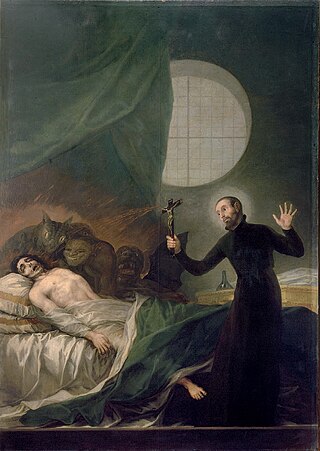
Exorcism is the religious or spiritual practice of evicting demons, jinns, or other malevolent spiritual entities from a person, or an area, that is believed to be possessed. Depending on the spiritual beliefs of the exorcist, this may be done by causing the entity to swear an oath, performing an elaborate ritual, or simply by commanding it to depart in the name of a higher power. The practice is ancient and part of the belief system of many cultures and religions.

The Great Ejection followed the Act of Uniformity 1662 in England. Several thousand Puritan ministers were forced out of their positions in the Church of England, following The Restoration of Charles II. It was a consequence of the Savoy Conference of 1661.
Robert Aldridge was an English clergyman.

John Rogers was an English Puritan clergyman and preacher. Described as a "grave and judicious divine" and considered one of the most awakened preachers of his era, according to the book, Lives of The Puritans.
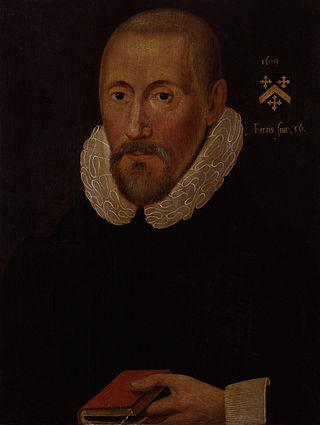
Arthur Hildersham (1563–1632) was an English clergyman, a Puritan and nonconforming preacher.
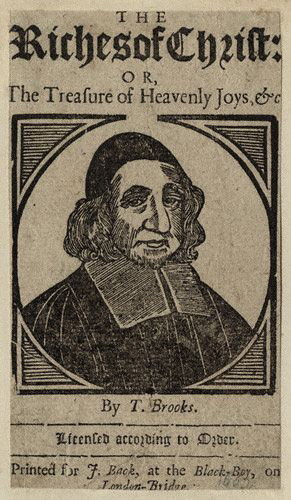
Thomas Brooks (1608–1680) was an English non-conformist Puritan preacher and author.

William Bates (1625–1699) was an English Presbyterian minister.
Benjamin Brook (1776–1848) was an English nonconformist minister and religious historian.
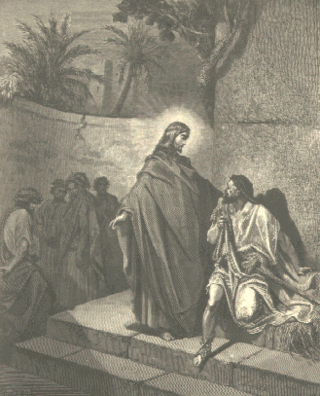
In Christianity, exorcism involves the practice of casting out one or more demons from a person whom they are believed to have possessed. The person performing the exorcism, known as an exorcist, is often a member of the Christian Church, or an individual thought to be graced with special powers or skills. The exorcist may use prayers and religious material, such as set formulas, gestures, symbols, icons, or amulets. The exorcist often invokes God, Jesus, angels and archangels, and various saints to aid with the exorcism. Christian exorcists most commonly cast out demons in Jesus' name.
Robert Wright (1556?–1624) was an English Anglican priest, a nonconformist under Elizabeth I.
Puritan exorcism was the use of exorcism by Puritan ministers. The demonology of Puritans was not unusual within the Early Modern demonology of Protestants, but the use of ritual and prayer in exorcism was more distinctive. The Church of England did not recognise the ritual of exorcism, while the Roman Catholic Church commonly did so. Some radical Puritan ministers performed exorcisms; but some leading Puritan writers, such as William Perkins, opposed the ritual, while accepting the underlying theories, for example about witchcraft.
Edmund Hartley, dubbed the Tyldesley witch, was a cunning man who from 1595 until 1596 was alleged to have practised witchcraft at Cleworth Hall in Tyldesley, Lancashire. Hartley was hanged, twice, after a trial at Lancaster Assizes in March 1597.
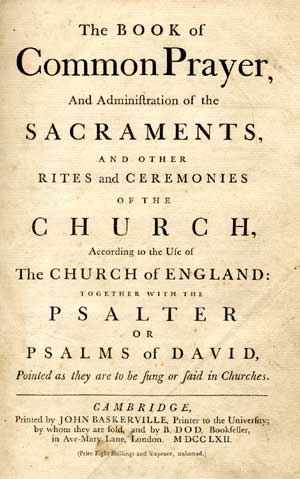
The 1662 Book of Common Prayer is an authorised liturgical book of the Church of England and other Anglican bodies around the world. In continuous print and regular use for over 360 years, the 1662 prayer book is the basis for numerous other editions of the Book of Common Prayer and other liturgical texts. Noted for both its devotional and literary quality, the 1662 prayer book has influenced the English language, with its use alongside the King James Version of the Bible contributing to an increase in literacy from the 16th to the 20th century.

The 1604 Book of Common Prayer, often called the Jacobean prayer book or the Hampton Court Book, is the fourth version of the Book of Common Prayer as used by the Church of England. It was introduced during the early English reign of James I as a product of the Hampton Court Conference, a summit between episcopalian, Puritan, and Presbyterian factions. A modest revision of the 1559 prayer book, the Jacobean prayer book became the basis of the 1662 Book of Common Prayer, a still-authorized liturgical book within the Church of England and global Anglicanism.
Isabel Darcy born Isabel Wray became Isabel Foljambe; Isabel Bowes and Isabel, Lady Darcy was an English patron of clergy. She was a supporter of exorcism and the exorcist John Darrell.
References
- ↑ Charles William Sutton (1888). "Darrel, John". In Dictionary of National Biography. 14. London. p. 67.
- 1 2 "Darrell, John". Oxford Dictionary of National Biography (online ed.). Oxford University Press. doi:10.1093/ref:odnb/7168.(Subscription or UK public library membership required.)
- ↑ "Darrell, John (DRL575J)". A Cambridge Alumni Database. University of Cambridge.